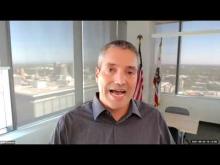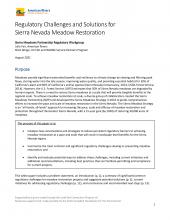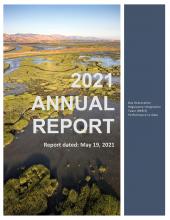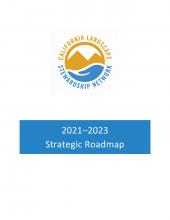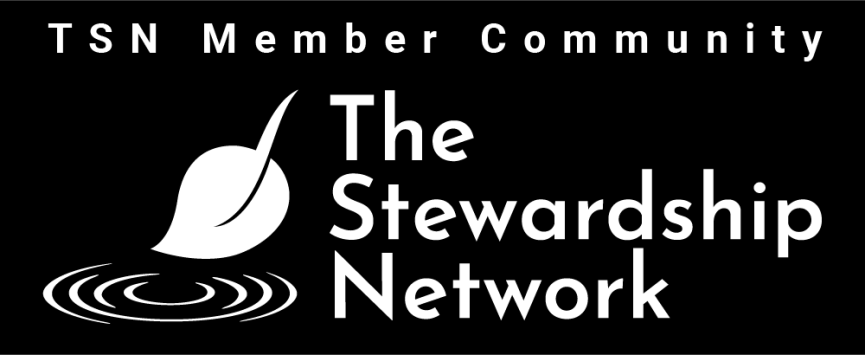A Resilience Strategy for Yuba Forests
- Details
-
The Yuba Forest Network aims to connect stewards of the Yuba watershed by uniting and building skills and efforts to create a resilient landscape. Modeled after Tahoe-Central Sierra Initiative's Resilience Framework, the purpose of this document is to describe a shared vision of forest health and resilience and desired outcomes for the region across stakeholders of the Yuba Forest Network.
Fostering Inclusivity and Respect: Engagement With Indigenous Peoples in the Management and Presentation of Protected Areas in North America
- Details
-
In recent years, the limitations of land-management decisions based predominantly on Western knowledge have become apparent. By adopting a more holistic perspective, we can improve our understanding of the interconnected forces that shape ecology throughout North America and expand our tools and approaches for land and resource conservation. Incorporating and implementing the demonstrated knowledge of Indigenous peoples can prove crucial for the survival of some of our most critically threatened ecosystems and species, the sustainable use of our cherished protected areas and the surrounding landscapes and seascapes, and for the revitalization of human health and connections to nature.
Creating a Nature-Positive Future: The Contribution of Protected Areas and Other Effective Area-based Conservation Measures
- Details
-
Protected areas (PAs) are essential tools for biodiversity conservation. Area-based conservation is recognized as a crucial component for achieving a nature positive future, for the resilience of the planet and biodiversity, as well as for humanity. Now, the process for developing the post-2020 Global Biodiversity Framework is underway, with the framework set to be adopted at the fifteenth meeting of the Conference of the Parties (COP) to the Convention, with a 2050 vision of “living in harmony with nature”.
Natural and Working Lands Climate Smart Strategy
- Details
-
Our lands are a critical yet underutilized sector in California’s fight to achieve carbon neutrality and build resilience to the impacts of climate change. Healthy land can sequester and store carbon emissions, limit future carbon emissions into the atmosphere, protect people and nature from the impacts of climate change, and build resilience to future climate risks. Unhealthy lands have the opposite effect – they release more greenhouse gases than they store, increase climate risks to people and nature, and are more vulnerable to future climate change impacts.
This Strategy:
• Defines California’s eight natural and working landscapes.
• Describes how these lands can deliver on our climate change goals.
• Highlights priority nature-based climate solutions to address the climate crisis.
• Explores opportunities for regional climate smart land management.
• Identifies options to track nature-based climate action and measure progress.
• Outlines nearly 200 opportunities to scale climate smart land management across regions and sectors in California.
Cutting Green Tape Fall 2021 Exchange
- Details
-
The second Cutting Green Tape Exchange took place on September 29, 2021. During the two-hour session facilitated by Shawn Johnson, we examined progress we’ve collectively made towards the recommendations in the Regulatory Efficiencies report, engaged with leadership on topics important to the restoration community, and highlighted feedback from practitioners on how to continue increasing the pace and scale of ecological restoration in California. It featured welcoming remarks and updates on the interagency-led Cutting Green Tape Initiative from California's Secretary for Natural Resources Wade Crowfoot, Deputy Secretary for Habitat & Biodiversity Jen Norris, and more, including:
- Sharon Farrell (Golden Gate National Parks Conservancy & CLSN Steering Committee)
- Chad Dibble (CA Department of Fish & Wildlife) Phil Crader (State Water Resources Board)
- Madeline Cavalieri (CA Coastal Commission) Matt Clifford (Trout Unlimited)
- Shelana deSilva (SdS Consulting & CLSN Steering Committee)
- Darcie Goodman Collins (League to Save Lake Tahoe)
- Jessica Morse (Deputy Secretary for Forest Resources Management)
- Patrick Wright (Governor's Wildfire & Forest Resilience Task Force)
- Kellyx Nelson (CLSN Steering Committee)
- Kristopher Tjernell (Department of Water Resources)
Regulatory Challenges and Solutions for Sierra Nevada Meadow Restoration
- Details
-
Permitting and environmental compliance is acknowledged as an onerous, time consuming and costly component of meadow restoration projects and is recognized as a bottleneck for implementation on the ground. There is a need to improve the permitting processes for meadow restoration in order to increase the pace and scale of restoration to meet the targets of the Sierra Meadows Partnership and state and federal agencies, and to achieve benefits at the regional scale.
This white paper is the result of three years of knowledge gathering by the Sierra Meadows Partnership (SMP) Regulatory Workgroup and draws on the collective experience of Sierra Meadows Partnership practitioners implementing projects for more than 10 years. The SMP Regulatory Workgroup convened meetings between meadow restoration practitioners and regulatory agency staff, reviewed literature, participated in high-level initiatives including the CDFW-led Restoration Leaders Committee (RLC), and coordinated with other groups including Sustainable Conservation who are working to streamline permitting in California.
Bay Restoration Regulatory Integration Team (BRRIT): 2021 Annual Report
- Details
-
This annual report reviews the activities and performance of the Bay Restoration Regulatory Integration Team (BRRIT) through April 2021, and incorporates relevant information from the initial performance memo provided to the San Francisco Bay Restoration Authority (SFBRA) Governing Board in May 2020 (May 2020 Memo).
The BRRIT mandate is to increase permitting efficiency for multi-benefit habitat restoration projects and associated flood management and public access infrastructure in San Francisco Bay.
Cutting Green Tape April 6 2021
- Details
-
On April 6, 2021, the California Landscape Stewardship Network hosted a virtual event on Cutting Green Tape that brought together colleagues from California Natural Resources Agency and restoration practitioners from across the state to share updates and engage around future efforts for the initiative.
Speakers and panelists included:
- Wade Crowfoot, California's Secretary for Natural Resources
- Jen Norris, Deputy Secretary for Habitat and Biodiversity
- Chad Dibble, Deputy Director of Ecosystem Conservation Division, CDFW
- Paul Hann, Chief of Watersheds and Wetlands, State Water Resources Control Board
- Erika Lovejoy, Program Director for Accelerating Restoration at Sustainable Conservation
- Kellyx Nelson, Executive Director of San Mateo RCD and CLSN Steering Committee
The conversation was moderated by Shawn Johnson.
CLSN Strategic Roadmap Executive Summary
- Details
-
The executive summary of CLSN 2021 - 2023 Strategic Roadmap, including its four main focal areas and related objectives.
CLSN 2021 - 2023 Strategic Roadmap
- Details
-
During the fall of 2020, the California Landscape Stewardship Network (CA Network) Steering Committee undertook a process to review Network successes, to assess current needs and opportunities, and to chart a course forward. The Steering Committee relied on several sources for candid feedback and new ideas, including:
- targeted interviews with Steering Committee members and key CA Network partners/advisers,
- a Network-wide participants survey, and
- in-depth discussions among the Steering Committee on key issues.
What we heard was agreement that there are specific areas where the CA Network has been successful as well as opportunities for evolution or growth. One of the key findings was that the CA Network does not act like a formal organization, but rather serves as a platform for people to work together in new ways. Because it works on emergent needs and opportunities, and remains highly adaptive and constantly in process, it needs a “strategic roadmap” rather than a traditional strategic plan. This document provides that roadmap though guidance on how to maintain Network strengths and ways to sustain its ongoing and successful journey. We consider this strategic roadmap to be a living document, and welcome questions, feedback, and further insights from our community of practice and collaborators.


